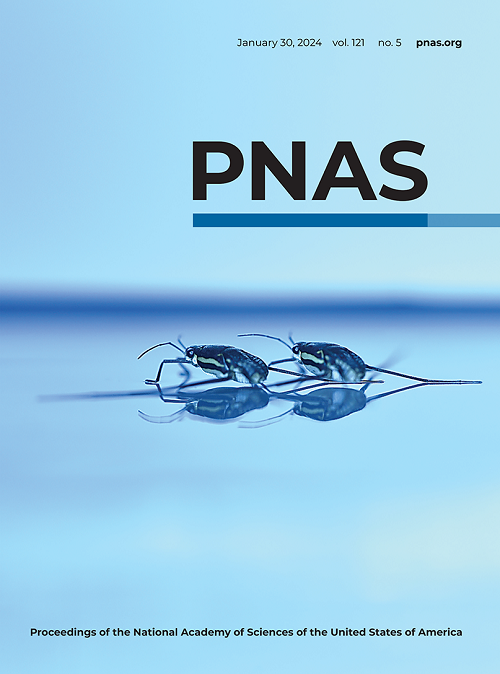淀粉样蛋白-β调节α-突触核蛋白的相分离和聚集
IF 9.4
1区 综合性期刊
Q1 MULTIDISCIPLINARY SCIENCES
Proceedings of the National Academy of Sciences of the United States of America
Pub Date : 2025-07-14
DOI:10.1073/pnas.2501987122
引用次数: 0
摘要
淀粉样蛋白-β (a β)和α-突触核蛋白(αSyn)聚集成不溶性蛋白沉积物是阿尔茨海默病和帕金森病的标志。最近的证据表明,这些淀粉样蛋白协同作用,在这些疾病中经常观察到它们的共聚集。在这项研究中,我们利用各种生物物理工具研究了Aβ和αSyn的相互作用。特别地,我们探索了Aβ与αSyn的共缩合,阐明了Aβ调节αSyn相分离的途径。我们研究了Aβ的不同变异,重点研究了最突出的Aβ42和Aβ40。我们发现a - β42和a - β40对α - syn缩合反应的机理有根本不同的影响。α β42最初形成大的聚集体,作为异相成核位点,引发αSyn的相分离。相反,a - β40被隔离在αSyn凝聚物中,加速αSyn从液到固转变为淀粉样聚集体。我们探测的所有其他Aβ变体都属于这两种机制途径之一,其中Aβ37、Aβ39和Aβ35-25表现出与Aβ40相似的行为,而Aβ43触发的成核过程与Aβ42相似。鉴于淀粉样蛋白形成背后的复杂性,理解分子伙伴如何相互作用是关键。因此,我们的研究结果说明了蛋白质混合物的极端敏感性,并揭示了Aβ与αSyn共凝和聚集的一些机制。本文章由计算机程序翻译,如有差异,请以英文原文为准。
Amyloid-β modulates the phase separation and aggregation of α-synuclein
The aggregation of amyloid-β (Aβ) and α-synuclein (αSyn) into insoluble proteinaceous deposits is a hallmark of Alzheimer’s and Parkinson’s diseases. Recent evidence suggests that these amyloidogenic proteins act in synergy, with their coaggregation frequently observed in these disorders. In this study, we investigate the interaction of Aβ and αSyn using various biophysical tools. In particular, we explore the cocondensation of Aβ with αSyn, elucidating the pathways through which Aβ modulates αSyn phase separation. We studied different variants of Aβ, focusing on the most prominent species, namely Aβ42 and Aβ40. We found that Aβ42 and Aβ40 have fundamentally different mechanistic effects on the kinetics of αSyn condensation. Aβ42 initially forms large aggregates that act as heterogeneous nucleation sites which initiate the phase separation of αSyn. In contrast, Aβ40 is sequestered into αSyn condensates where it accelerates the liquid-to-solid transition of αSyn into amyloid aggregates. All other Aβ variants we probed fell into one of these two mechanistic pathways, with Aβ37, Aβ39, and Aβ35-25 exhibiting similar behavior to Aβ40, whereas Aβ43 triggered nucleation processes similar to Aβ42. Given the complexity behind amyloid formation, it is key to understand how molecular partners can interact with one another. Our results thus illustrate the extreme sensitivity of protein mixtures and shed light on some of the mechanisms involved in the cocondensation and aggregation of Aβ with αSyn.
求助全文
通过发布文献求助,成功后即可免费获取论文全文。
去求助
来源期刊
CiteScore
19.00
自引率
0.90%
发文量
3575
审稿时长
2.5 months
期刊介绍:
The Proceedings of the National Academy of Sciences (PNAS), a peer-reviewed journal of the National Academy of Sciences (NAS), serves as an authoritative source for high-impact, original research across the biological, physical, and social sciences. With a global scope, the journal welcomes submissions from researchers worldwide, making it an inclusive platform for advancing scientific knowledge.

 求助内容:
求助内容: 应助结果提醒方式:
应助结果提醒方式:


